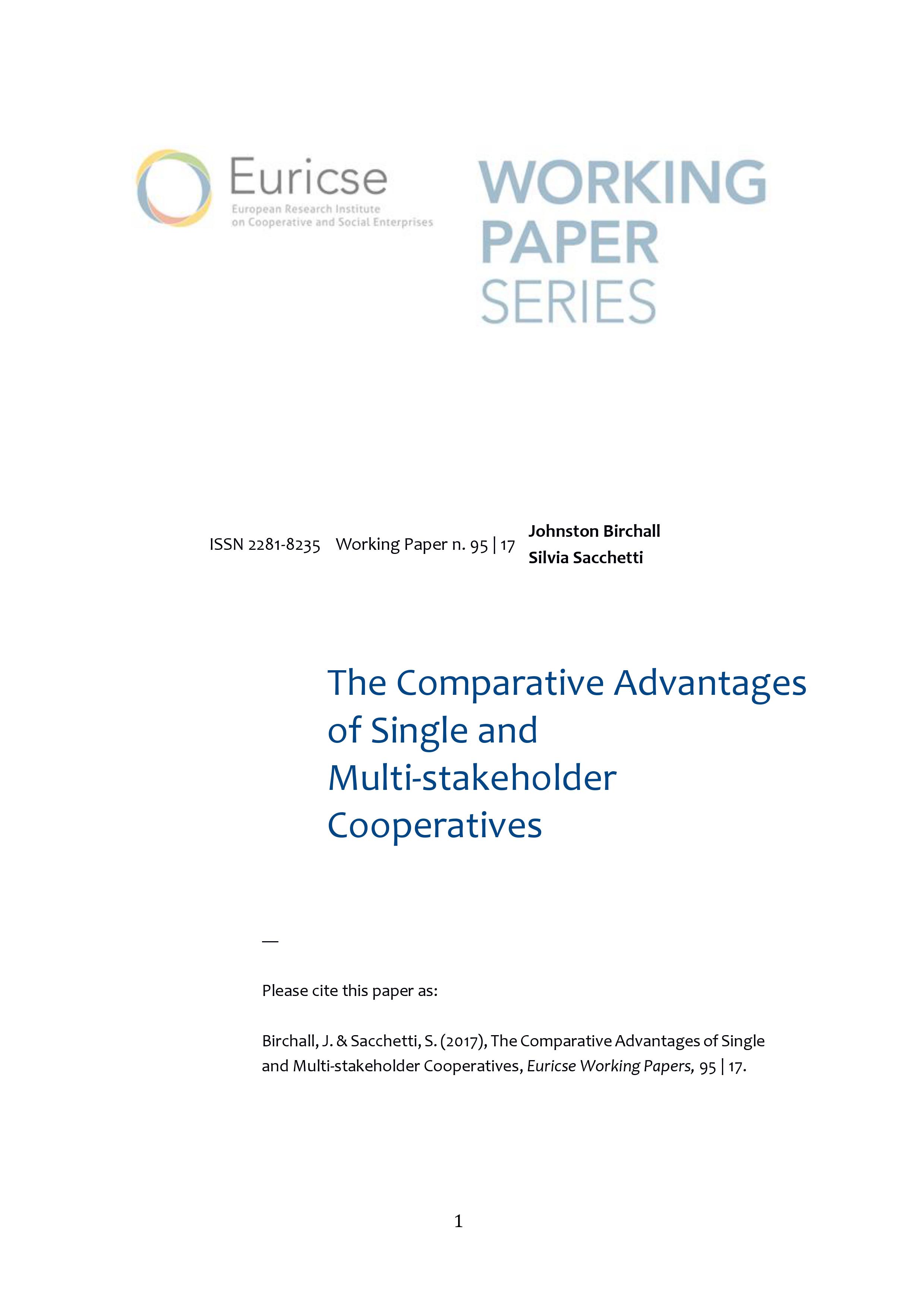WP 95 | 17 The Comparative Advantages of Single and Multi-stakeholder Cooperatives
When cooperatives were first invented, it was assumed their membership would be limited to one type of user. The Rochdale Pioneers favoured consumers, and employee representation was deliberately limited to a set percentage of board members. Similarly, Schulze Delitsch and Raiffeisen privileged farmers, Buchez workers, insurance mutuals those who are insured, and so on. Recently, Italian social cooperatives have developed a different model in which all the relevant stakeholders become members: those who are cared for, the carers, the workers, and volunteers. Also, occasionally dual stakeholder cooperatives have been designed. Eroski, the big Spanish retailer, has both consumers and workers in membership, and iCoop in Korea has both consumers and farmers. This paper has two aims, to set out some of the theoretical arguments for and against multi-stakeholder governance, to look at examples of multi-stakeholder models in practice, and to generate from this a set of research questions.

